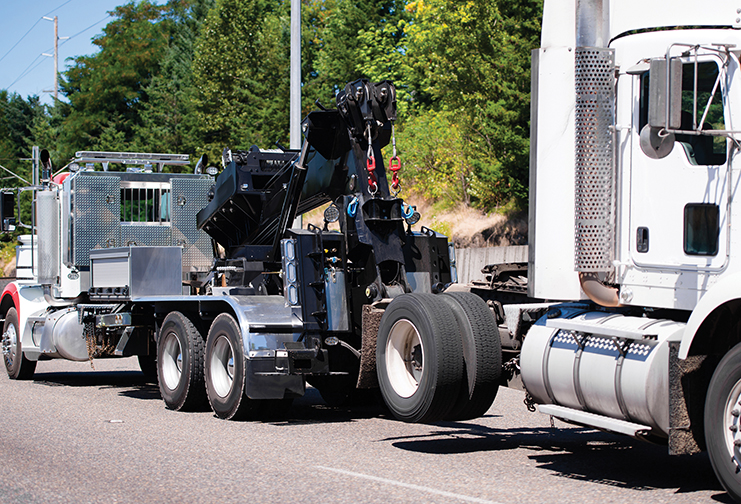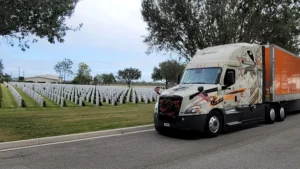To no one’s surprise, Rep. Jesus “Chuy” Garcia (D-Ill.) in mid-April reintroduced his “Insurance Act” that would increase minimum liability insurance coverage mandates for motor carriers.
The bill is designed to bring coverage minimums in line with what sponsors claim are current medical costs. The current $750,000 financial responsibility requirement, implemented in 1980, would need to rise to nearly $4.9 million to keep pace with medical cost increases since that time, sponsors say. Additionally, the bill calls for periodic adjustment of the minimum based on medical cost inflation.
Garcia had previously introduced the bill in 2020, with an amended version included in the failed Democrat infrastructure “Moving Forward” bill that was not considered in the Republican-controlled Senate. This year, with Democrats having control of both houses of Congress and the White House, backers are confident of approval.
Although the text of Garcia’s current bill was not yet available at press time, the details of the reintroduced bill are presumed to be the same as last year’s attempt.
The bill, co-sponsored by eight other representatives, is backed by the usual assortment of safety organizations. Many carriers already have coverage higher than the legal minimum to comply with customer requirements or Federal Motor Carrier Safety Administration regulations for hazardous materials or other hauling.
Regardless of the coverage, or the amount paid for it, there are actions that every carrier, large or small, can take to keep insurance costs as low as possible.
“The biggest factor is to keep losses low,” explained Brian Runnels, director of safety at Reliance Partners, a provider of insurance services. “Zero is best. The longer you’ve been in business with low or no losses, the better.”
If you’re an owner-operator, leasing to another carrier often means you’re covered by that carrier’s liability policy rather than your own — and that could be a problem later. Obtaining and running under your own authority can result in higher insurance premiums because, despite your experience, your company is considered “new.”
“If the DOT number listed on the policy keeps changing — that’s what they look at — the underwriters can consider it as a new business each time,” Runnels said.
Other factors can also cause higher premiums for owner-ops. Larger carriers have safety programs that monitor driver performance and offer regular training. When you’re on your own, there is no safety department … or is there?
“Consider the value-added services agencies can provide in areas like safety, claims, CSA (compliance, safety, accountability) and regulations,” Runnels said. “For example, we can assist with Data Q requests for CSA. We’ll be able to tell you that we can help or that you’re kind of stuck with whatever is on your record.”
Insurance agencies can often help with training and recordkeeping, too. The DOT is strict on which documents belong in driver files, for example, and a good agency may be able to provide guidance.
Mark Murrell, co-founder of CarriersEdge, a marketer of online training, content creation and record keeping, says there is no reason a small trucking company can’t have a strong safety presence. Murrell and partner Jane Jazrawy created and administer the “Best Fleets to Drive For” program.
“Have a safety program documented, and don’t think you can’t do it because you’re a small fleet,” Murrell emphasized. “Don’t get the idea that that’s something that’s only for big companies.”
Documentation is essential for convincing insurance underwriters that a safety program is in place, according to Murrell.
“The biggest challenge for the fleet, when it comes time to dealing with the insurance company, is that they don’t have any documentation of the things that they’re doing,” he said.
Runnels agrees.
“You might be a safe driver, but your safety program, even if it is only for yourself, matters,” he said. “Are you reviewing available information? Are you keeping up with best practices, through safety videos, subscriptions to safety publications, reviewing data from cameras and ECMs (engine control modules)?”
There are resources that can be used to achieve some of the benefits of a safety department. The internet, for example, has made training accessible to anyone who has a smartphone or computer.
“For smaller companies, for $20 a month, you can be having a service like ours,” Murrell said.
CarriersEdge offers more than 80 training titles, with new titles added regularly. A solo operator can obtain a subscription and participate in a couple of modules per month.
“We pitch our service as ‘Netflix for training,’” Murrell explained. “It’s cost-effective enough that you can show that you’re diligent and doing something.”
CarriersEdge keeps a record of training provided for its clients.
“When it comes time for insurance renewal or when they’re shopping around for policies, it’s very easy for the insurance people to come in and look at the history and see those records, and it’s way cleaner and way more organized and having to pull together a pile of papers,” Murrell said.
Reviewing data from cameras and ECMs, as Runnels suggested, requires documentation. For example, you can review each “saved” video on your dash cam — those triggered by an impact, hard stop or other action — to see if your actions in each case could have been improved upon. A list or table of the date reviewed, incident type and what you learned could help convince an insurance company that you have a program for continuous improvement in place.
“The very first thing that’s pulled after an accident is ECM data,” Runnels explained. “You should be using the data to get better. If you’re solo, look at the data, use it to make yourself better.”
Again, the date of the review and other information must be documented to show that a review occurred.
“Document reviews and actions taken, even if it’s only on yourself,” Murrell said.
That documentation helps demonstrate an effective safety-management strategy and can help on insurance rates and even in litigation, should you need a defense after an accident.
“It looks different with one truck than it does with 200, but if you’re doing something that says, ‘Here’s my process for figuring out my problem and making improvements, and here’s where I’ve made changes as a result,’ that’s a good story for the insurance people,” he continued.
There may not be many truckers in favor of paying higher insurance premiums, but any trucker can take steps to keep liability insurance costs as low as possible.
Cliff Abbott is an experienced commercial vehicle driver and owner-operator who still holds a CDL in his home state of Alabama. In nearly 40 years in trucking, he’s been an instructor and trainer and has managed safety and recruiting operations for several carriers. Having never lost his love of the road, Cliff has written a book and hundreds of songs and has been writing for The Trucker for more than a decade.
















If you want to raise our insurance? How about we put a cap of a million per incident max..no matter how much these juries try to give with their bleeding hearts…